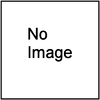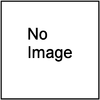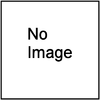 Sniper training 1940 (amended to 1941).
The art of the sniper in 1940, containing instruction on equipment, training and operations. Amended with the 1941 insert "How to make your own sniper suit."
Soon to be followed by Snipers (1946) which completes the story to the end of World War II. See also other pamphlets on sniping.
Sniper training 1940 (amended to 1941).
The art of the sniper in 1940, containing instruction on equipment, training and operations. Amended with the 1941 insert "How to make your own sniper suit."
Soon to be followed by Snipers (1946) which completes the story to the end of World War II. See also other pamphlets on sniping.
 Field Marshal Montgomery's thoughts on battlecraft.
In the winter of 1944, before the Battle of the Bulge, Montgomery took the time to write down his basic thoughts (in reality his doctrinal mantra) on handling infantry and armoured divisions in war and the use of air power in battle. What is interesting is the realisation that he was always a man for the set-piece battle, and the resulting conclusion that Operation Market-Garden was not typical of his method at all.
In reading these three pamphlets (amalgamated into one by MLRS) the voice of the man can be quite clearly heard!
Field Marshal Montgomery's thoughts on battlecraft.
In the winter of 1944, before the Battle of the Bulge, Montgomery took the time to write down his basic thoughts (in reality his doctrinal mantra) on handling infantry and armoured divisions in war and the use of air power in battle. What is interesting is the realisation that he was always a man for the set-piece battle, and the resulting conclusion that Operation Market-Garden was not typical of his method at all.
In reading these three pamphlets (amalgamated into one by MLRS) the voice of the man can be quite clearly heard!
 The British Army issued this pamphlet when it became quite apparent that operations in snow and mountainous areas were in serious prospect, and it compliments the already published Mountain Warfare. This pamphlet is of dual value, for it teaches how to fight in snow, and aso how to survive. The pamphlet covers infantry, armour and other arms operating in snow, and is recommended.
The British Army issued this pamphlet when it became quite apparent that operations in snow and mountainous areas were in serious prospect, and it compliments the already published Mountain Warfare. This pamphlet is of dual value, for it teaches how to fight in snow, and aso how to survive. The pamphlet covers infantry, armour and other arms operating in snow, and is recommended.
 River crossings are always a problem for ground forces - and particularly after D-Day when there were many rivers to cross. The initial stage of a river crossing involves an infantry assault to open a bridgehead on the far bank, and this pamphlet deals with the tactics and equipment required to effect this. It covers the standard and improvised methods as well as watermanship. Amply illustrated with line drawings and photographs.
River crossings are always a problem for ground forces - and particularly after D-Day when there were many rivers to cross. The initial stage of a river crossing involves an infantry assault to open a bridgehead on the far bank, and this pamphlet deals with the tactics and equipment required to effect this. It covers the standard and improvised methods as well as watermanship. Amply illustrated with line drawings and photographs.
 This is a reprint of the manual for snipers produced in 1946 by the British Army. It includes all the lessons learned during the Second World War.
It includes practical advice of fieldcraft and sniping, and covers the No. 4 (T) Service Sniping Rifle.
The lessons in this manual are still valid today, and the book is a classic of sniping literature.
Highly recommended.
This is a reprint of the manual for snipers produced in 1946 by the British Army. It includes all the lessons learned during the Second World War.
It includes practical advice of fieldcraft and sniping, and covers the No. 4 (T) Service Sniping Rifle.
The lessons in this manual are still valid today, and the book is a classic of sniping literature.
Highly recommended.
 This manual was issued in May 1944 and gives details of the tactics of US antitank platoons in operation. Sections include movement, reconnaissance, firing positions, the fire fight and infantry-tank cooperation. With 35 illustrations of the points made, this is a valuable book in that it shows American antitank doctrine on the eve of D-Day.
This manual was issued in May 1944 and gives details of the tactics of US antitank platoons in operation. Sections include movement, reconnaissance, firing positions, the fire fight and infantry-tank cooperation. With 35 illustrations of the points made, this is a valuable book in that it shows American antitank doctrine on the eve of D-Day.
 Armoured Divisions always have organic infantry units within them, whose job it is to clear the ground of antitank weapons and enemy infantry as the armour advances. This pamphlet covers the infantry mortar element of the infantry battalion, which was mounted in half-tracks, and provided support for the infantry at work. The pamphlet covers all aspects of the training, command and control and employment of the unit in battle. Amply illustrated with 98 figures in the text.
Armoured Divisions always have organic infantry units within them, whose job it is to clear the ground of antitank weapons and enemy infantry as the armour advances. This pamphlet covers the infantry mortar element of the infantry battalion, which was mounted in half-tracks, and provided support for the infantry at work. The pamphlet covers all aspects of the training, command and control and employment of the unit in battle. Amply illustrated with 98 figures in the text.
 This is part of a series of pamphlets dealing with the tactical handling of the components of the Armoutred division. It covers all aspects of handling the armoured regiment in battle and has a series of illustrations showing formations and movements in actions, as well as having explanatory text relating to regiment, squadron and troop formations, the principles governing the employment of units, operating orders, tactical handling, protection, administration and intercommunication.Of great value in understanding how the British operated an armoured regiment in the field, and the pamphlet guided troops during the operations in 1944-45.
This is part of a series of pamphlets dealing with the tactical handling of the components of the Armoutred division. It covers all aspects of handling the armoured regiment in battle and has a series of illustrations showing formations and movements in actions, as well as having explanatory text relating to regiment, squadron and troop formations, the principles governing the employment of units, operating orders, tactical handling, protection, administration and intercommunication.Of great value in understanding how the British operated an armoured regiment in the field, and the pamphlet guided troops during the operations in 1944-45.
 This British Army manual on the Belgian Army was published in 1934, so it covers almost all aspects of the force which faced the Germans in 1940. No later version appeared. It covers every needed aspect of the Belgian Army as well as Belgium and the Belgian Congo. There are chapters on Infantry,Cavalry, Artillery and the services; weapons and equipment are described, as are the rear services, plus the auxiliary units and the Belgian police.
This British Army manual on the Belgian Army was published in 1934, so it covers almost all aspects of the force which faced the Germans in 1940. No later version appeared. It covers every needed aspect of the Belgian Army as well as Belgium and the Belgian Congo. There are chapters on Infantry,Cavalry, Artillery and the services; weapons and equipment are described, as are the rear services, plus the auxiliary units and the Belgian police.
 This manual was issued by the War Office just prior to D-Day and is the official line on the cooperation between tanks and infantry which was absolutely essential for tactical success on the mainland of Europe against the Germans - who were very good at this tactic themselves.
Reading the pamphlet illustrates the lessons learned in the previous four years and shows that at long last the British Army had caught up with the Germans in an important area of batttlecraft.
This manual was issued by the War Office just prior to D-Day and is the official line on the cooperation between tanks and infantry which was absolutely essential for tactical success on the mainland of Europe against the Germans - who were very good at this tactic themselves.
Reading the pamphlet illustrates the lessons learned in the previous four years and shows that at long last the British Army had caught up with the Germans in an important area of batttlecraft.
 The tactical handling of the German Armoured Division 1942. This is an official German pamphlet (in translation) on this very important subject and gives details of organisation, tasks, reconnaissance, movement, attack and defence and special circumstances together with all administrative matters.
This is the real thing, and fundamental to anyone interested in German armoured troops and their operational use.
The tactical handling of the German Armoured Division 1942. This is an official German pamphlet (in translation) on this very important subject and gives details of organisation, tasks, reconnaissance, movement, attack and defence and special circumstances together with all administrative matters.
This is the real thing, and fundamental to anyone interested in German armoured troops and their operational use.
This manual was issued to the British Army in December 1940, and is a near complete picture of the German Army at the time. The German Army was a complex machine, with many innovative features, yet still relied heavily on the horse for its pulling power in the field. The manual looks at every aspect of the German Army (and, to a lesser extent, the Waffen SS) and gives details as known at the time. It covers the fighting arms and the services behind them - organisation, weapons and equipment and is a first class picture of the German Army at the end of the campaigns of 1940, only six months before the invasion of Russia.
There are also 90 photographs of men, weapons and equipment and a series of pull-outs related to the text.
A title which should be in every German Army collection.
 This is a translation of an official German manual on the Motorized Infantry Regiment. The manual covers the tactics of the motorised infantry regiment and battalion in the German Army. It covers weapons, tactics, doctrines of attack and defence and special situations. Also includes organisational details.
Of real value to the student of infantry.
This is a translation of an official German manual on the Motorized Infantry Regiment. The manual covers the tactics of the motorised infantry regiment and battalion in the German Army. It covers weapons, tactics, doctrines of attack and defence and special situations. Also includes organisational details.
Of real value to the student of infantry.
MLRS Books provide a download service for military historians and those interested in military history.
We specialise in primary source material and accounts which are assembled from such sources. We also publish new titles of specific interest in the field of military history and military genealogy.
MLRS Books offers a catalogue of resources via download only and
these are not printable. Should you want physical copies of our products, we
recommend visiting Caliver Books.
Payment is via Paypal, and prices are as quoted. Hopefully you will be pleased with your purchase,
however, do e-mail if it isn't and we'll try to fix it.







